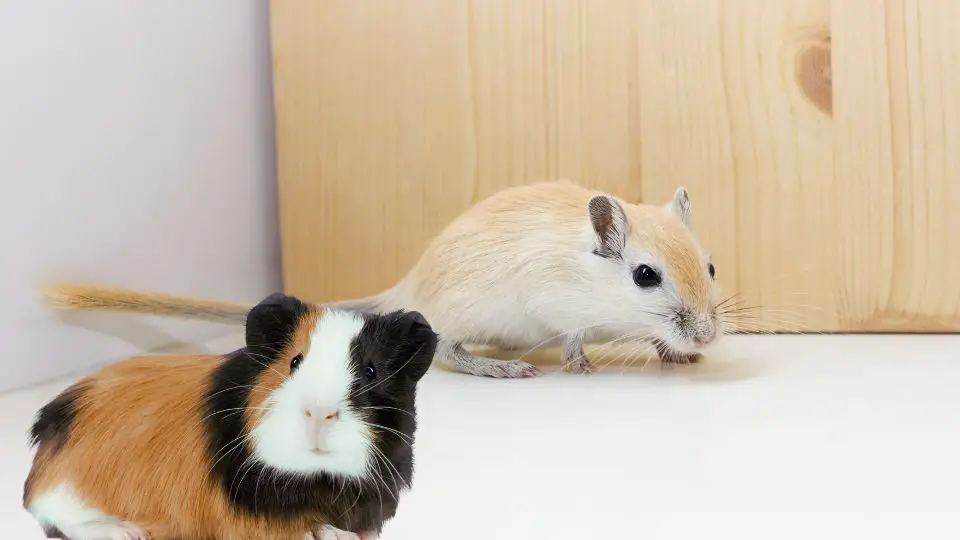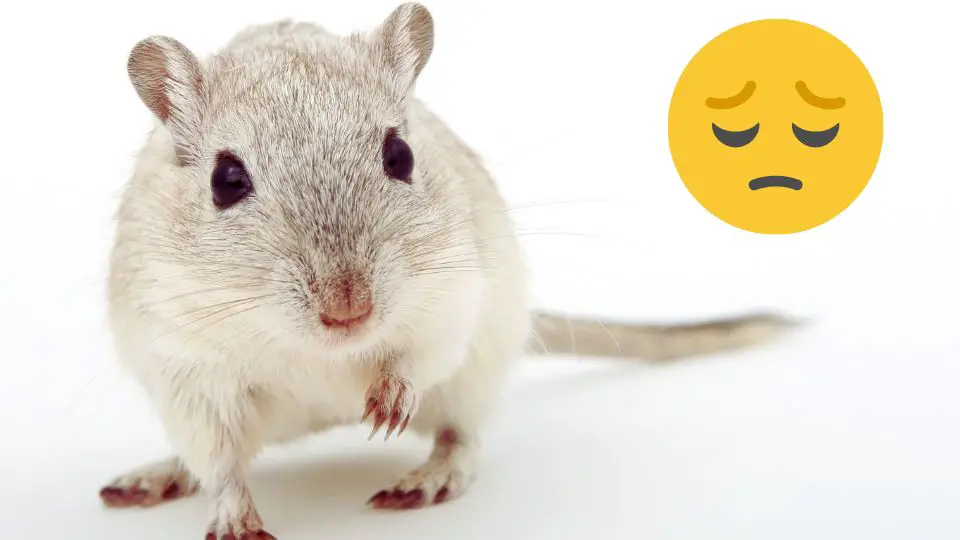Handling a gerbil can be an exciting and rewarding experience, but it’s important to approach it with care and respect for the gerbil’s comfort and well-being.
To pick up a gerbil, approach it slowly and calmly, then gently scoop it up from underneath using a cupped hand, ensuring a secure grip. Lift the gerbil smoothly, keeping it close to your body for comfort.
In this article, we will guide you through the steps of picking up a gerbil and provide tips for creating a calm and enjoyable experience for both you and your furry friend.
Understanding Gerbil Behavior
Before picking up your small pet, you have to understand the gerbil behavior. Gerbils are burrowing animals by nature, and their behaviors are shaped by their instincts. In the wild, they spend a significant amount of time digging tunnels and creating intricate burrow systems. This burrowing behavior is deeply ingrained in their DNA and serves various purposes, such as providing protection, regulating body temperature, and storing food.
Gerbils are also highly social creatures. They live in small family groups and engage in various social interactions. These interactions include grooming each other, playing, and communicating through vocalizations and body language. Understanding these social behaviors is crucial for providing an environment that promotes their well-being.
When it comes to picking up gerbils, remember that each gerbil is an individual with its own personality and comfort level. Some gerbils may be more comfortable with human interaction and handling, while others may be more cautious or anxious. It’s crucial to respect their boundaries and allow them to feel secure during the handling process.
Gerbils may exhibit different reactions when being picked up. Some gerbils may readily climb onto your hand or allow you to scoop them up, while others may try to evade or escape. Don’t force your little pet to be handled if it shows signs of stress or discomfort. Instead, build trust gradually through positive interactions and gentle handling.
To respect their boundaries, it’s crucial to observe their body language and cues. Signs of stress or discomfort may include squeaking, wriggling excessively, biting, or trying to escape. If you notice any of these signs, it’s best to stop the handling and allow the gerbil to return to its enclosure. This will help maintain their trust and prevent unnecessary stress.
Preparing for Pick-Up
Before you pick up your gerbil, remember to create a safe and comfortable environment for your gerbil and promote a trusting relationship. Here are some general guidelines that we recommend:
- Wash Hands Thoroughly: Before attempting to handle a gerbil, you should wash your hands thoroughly. This helps remove any strong scents or residues that may startle or bother the gerbil. Use unscented soap and warm water to cleanse your hands, ensuring they are free from lotions, food odors, or other potential irritants.
- Create a Calm Environment: Gerbils are sensitive to their surroundings, provide a calm and quiet environment when you plan to handle them. Minimize noise, distractions, and sudden movements in the room where the gerbil is located. This will help the gerbil feel more at ease and reduce the chances of stress or anxiety during the handling process.
- Familiarize Yourself with Gerbil Behavior: Take some time to observe and familiarize yourself with your gerbil’s behavior and body language. Gerbils communicate through various cues, including vocalizations, body postures, and facial expressions. By understanding their communication signals, you can better interpret their comfort level and respond accordingly during handling.
- Gradual Introduction: If your gerbil is not accustomed to being handled or is generally skittish, you have to introduce handling gradually. Start by spending time near their enclosure, allowing them to become familiar with your presence. Gradually progress to offering treats from your hand and using gentle movements to gauge their comfort level.
- Use Proper Handling Techniques: When it comes time to pick up your gerbil, use proper handling techniques to ensure their safety and minimize stress. Gently scoop the gerbil using both hands, supporting their body and hindquarters. Avoid squeezing or gripping too tightly, as this can cause discomfort or injury. Allow the gerbil to feel secure and maintain a gentle and calm demeanor during the process.
Picking Up a Gerbil
Picking up a gerbil can be a delightful and bonding experience between you and your furry companion. However, it’s essential to handle gerbils with care and respect their small size and delicate nature.
Approach Slowly and Calmly
Gerbils are naturally cautious creatures, so it’s crucial to approach them slowly and calmly. Sudden movements or loud noises can startle them and cause stress or anxiety. Approach their enclosure gently, speaking in a soothing tone to let them become familiar with your presence.
Use a Cupped Hand
To pick up a gerbil, use a cupped hand technique. Place your hand palm-up near the gerbil, allowing them to explore and sniff your hand. Slowly and gently slide your hand underneath the gerbil, using your fingers to support their body while keeping their head above your hand. This helps prevent them from feeling trapped or frightened.
Support the Gerbil’s Body
As you lift the gerbil, ensure that you provide proper support for their body. Use your other hand to cradle and support their hindquarters, making them feel secure. Avoid squeezing or gripping too tightly, as this can cause discomfort or injury. A gentle and secure grip is essential for their well-being.
Lift Smoothly and Keep Close
Once you have a secure grip on the gerbil, lift them smoothly and bring them close to your body. This provides a sense of security and warmth for the gerbil and can help them feel more comfortable during the handling process. Keep a firm but gentle hold to prevent accidental falls or escapes.
Handling and Interacting with the Gerbil
Remember, each gerbil has its own personality and comfort level with handling. Some gerbils may take more time to feel at ease, while others may become accustomed to handling more quickly. Here are the best practices for handling and interacting with your gerbil:
- Maintain a Gentle and Secure Hold: When picking up your gerbil, maintain a gentle and secure hold. Support their body with your cupped hand, ensuring that their head is above your hand to prevent them from feeling trapped or frightened. Use your other hand to support their hindquarters, providing stability and security.
- Speak Softly and Avoid Sudden Movements: Gerbils have sensitive hearing, so you should speak softly and avoid sudden loud noises or movements that may startle them. Approach them calmly and move slowly to help them feel at ease. By creating a calm and quiet environment, you can reduce their stress and anxiety.
- Allow Exploration and Familiarization: Before attempting to handle your gerbil, allow them to explore your hands and become familiar with your scent. Place your hand inside their enclosure, allowing them to approach and sniff your hand at their own pace. This helps them associate your scent with a safe and positive experience.
- Offer Treats or Rewards: To make handling and interaction a positive experience, offer treats or rewards. Gerbils are food-motivated, so using treats can help them associate handling with something pleasant. Gently offer treats from your hand, allowing the gerbil to approach and take the treat willingly. This helps build trust and reinforces positive experiences with handling.
Respecting Boundaries and Signs of Discomfort
By respecting your gerbil’s boundaries and being attentive to their body language and cues, you can create a positive and comfortable environment for your furry friend.
Be Attentive to Body Language and Cues
Gerbils communicate through their body language, and being attentive to these signals can help you understand their comfort level. Some common signs of stress or discomfort in gerbils include flattened ears, raised fur, twitching tail, and tense body posture. If you notice any of these signs, give your gerbil some space and proceed with caution.
Watch for Signs of Stress or Discomfort
While handling your gerbil, keep a close eye on their behavior and look for signs of stress or discomfort. If your gerbil starts biting, scratching, or trying to escape from your hand, it’s an indication that they are not comfortable with the current situation. In such cases, it’s crucial to respect their boundaries and avoid further distress.
Gently Place Them Back in Their Enclosure
If your gerbil shows signs of distress or discomfort during handling, it’s best to gently place them back in their enclosure and give them some time to relax and feel secure. Trying to persist with handling when they are clearly uncomfortable can cause unnecessary stress and potentially harm the bond you’re trying to build. Remember that each gerbil is unique, and their comfort level with handling may vary.
Try Again Later
If your gerbil displays signs of discomfort or stress during handling, it’s advisable to try again later when they are more relaxed. Give them time to adjust to your presence and build trust gradually. With patience and consistency, your gerbil may become more comfortable with handling over time.
Conclusion
Picking up a gerbil may seem like a simple task, but it requires patience, gentleness, and an understanding of their behavior. By following the proper technique and taking into account the individual preferences of your gerbil, you can establish a bond built on trust and create a positive handling experience.
Remember to always be attentive to their body language and cues, and if your gerbil shows signs of discomfort or stress, give them space and try again later. With time and practice, you’ll become more confident in handling your gerbil, strengthening your bond and fostering a loving relationship.







